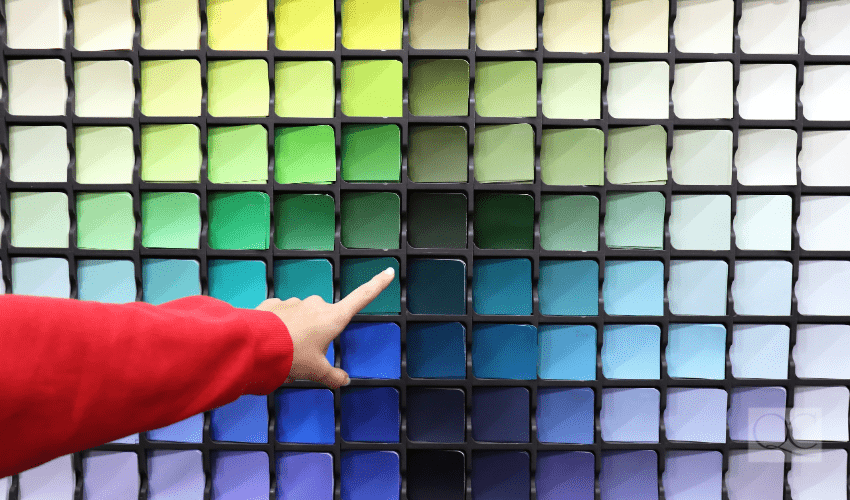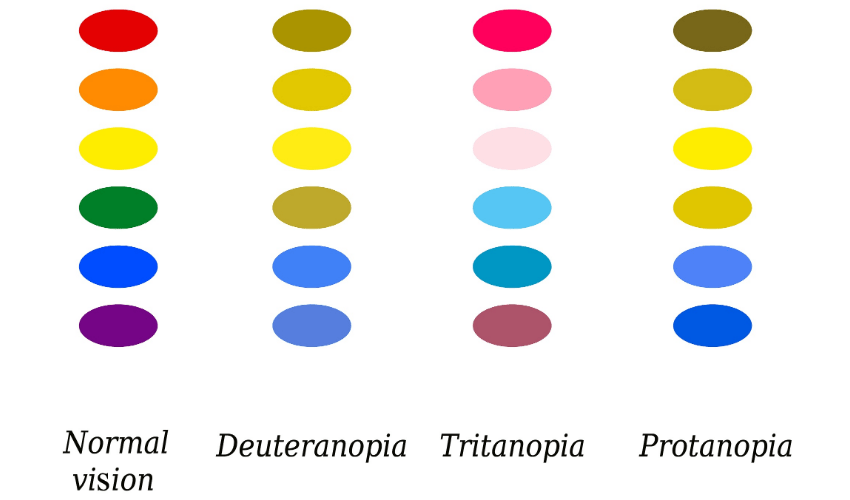Christina Kittelstad is a tutor of QC Design School. She’s also an accomplished color consultant, home stager, and painter. Her work has even been featured on HGTV’s show, “House Hunters”. She’s the owner and lead color consultant for Spiral Design Color Consulting. Christina is best known for creating beautiful, functional spaces through the use of color, as well as establishing a sense of style and personality that’s as unique as each of her clients!
As a color consultant, you have the unique ability to see the tiniest variations in colors, such as color values and saturations. This ability makes you indispensable when it comes to working with your clients!
Quite simply, this is because many of your clients won’t be able to detect these differences. As such, they’ll need your guidance in selecting colors that will work best for their needs. Some clients don’t trust their own judgement; others feel that they can’t narrow down to the perfect color or feel confident that it’ll look the way they think it will.
This is where you come in! Understanding the major role that color perception plays in the color process can make your job easier. Plus, it’ll provide you with additional, critical context that’ll allow you to meet your client’s needs.
Color perception can also be a learned skill. If you aren’t feeling as confident as you would like, taking QC Design School’s Color Consultant Course will teach you how to best approach your clients during color consultations!

Here are 5 Factors That Affect Color Perception
#1. Culture
Every continent and every culture around the world perceives color differently. Some cultures don’t even have a word for color, or all of the colors in the rainbow. Contributing factors that affect the way we perceive color include:
- Life experiences
- Language
- Art
- Fashion
- Religion
- Food
- Politics
- Holidays
- And more!
As I mentioned, some cultures don’t have a word for certain colors. On the other hand, some cultures have more than one word to describe a single color. In the fashion world, for example, an individual color can be associated with power, professionalism, health and fitness, and/or romance. But another culture may associate completely different colors with these same images and ideals.
When working with your clients, be sure you understand a little about their cultural background and how they perceive color. Do they have positive or negative associations with certain colors? How do they want to feel, and what colors can foster that? This will help you stay on the same page as you work through a project together.
#2. Age
When I first started working with my color consultant clients many years ago, I did not take this factor seriously enough. But over time, as I worked with more customers of all ages, I learned that age most definitely impacts our perception of color.

As we age, our vision yellows. This causes us to see colors differently. Cooler colors – such as blues and greens – can be harder to distinguish. So, using deeper, richer, or more saturated shades can be helpful.
Seniors with aging eyesight can benefit from warm, comforting colors such as yellow, reds, and coppers. A big difference in working with my senior clients has been their perception of whites for ceilings, trim, doors, and walls. They see much more yellow in an off-white hue, when compared to what I (or a younger client) would see.
Their eyes are very sensitive to this, and so we stay with lighter, warm whites. That way, we aren’t using white colors that would be too dark or overpowering for them.
#3. Lighting
If you’ve taken QC’s Color Consultant Course, then you have studied and know that lighting is a HUGE factor in perceiving color.
Depending on the lighting in a client’s home or office, colors will look different. If you pick up color swatches at the paint store and bring them home, each color will look much different in your own home lighting, versus the bright lighting of the store.
Client’s often overlook the influence that lighting has on color. They might make costly mistakes by choosing colors at the store, and not taking the time to view them in their own lighting over a 24-48 hour period. When it comes to color, you need to properly see how it shifts from the morning through evening light.
As a color consultant, it’s up to you to steer them onto the right path. Discussing the differences between warm and cool lighting options with your clients, based on their desired colors, can make or break a project.
#4. Color Blindness

During color consultations with my clients, I often times have a couple where one partner (typically a male) states that they’re color blind. Because of this, they tend to defer to their partner to do the heavy lifting of making the final color selections.
If a client is color blind, they may have issues seeing blues, greens, or reds correctly. For example, they may not be able to distinguish between blue or purple, or blue and gray. Red may look closer to brown. Yellow and white can also be hard to distinguish.
Color blindness is often genetic, but it can also be caused by age or illness. It’s caused by the photo-receptors in the eye that are missing or not working properly. If you have a client with color blindness, ask them what colors they find challenging. This will help you understand how to best approach the color selection process with them, and recommend colors that will meet their goals.
#5. Color Background
This factor is often overlooked during color consultations. Every color will look different, depending on the background or surface it’s viewed on. It is usually best to view a color on a neutral, white background such as:
- A poster board
- A white wall, or
- A white sheet of paper
Color swatches will take on different colors absorbing from the background. If a client is choosing a wall color with the aim of complimenting another color, it’s beneficial to first compare the two colors. This way, you can be better assured that they have the potential to match well together. This is also the case if choosing a color to compliment a room’s existing furniture, tile, counter-tops, or other textiles.
Again, always encourage clients to view color options in their own home or office, in order to see exactly how that color will look in their own space!

Color perception is a topic we could discuss at length. These are just a few of the biggest factors that affect color perception when working with your color clients, during a color consultation. As a color consultant, it’s SO important to be aware of these factors so that you can best understand your client’s needs, tastes, and challenges!


